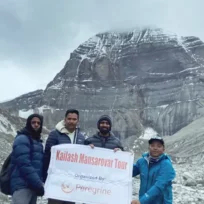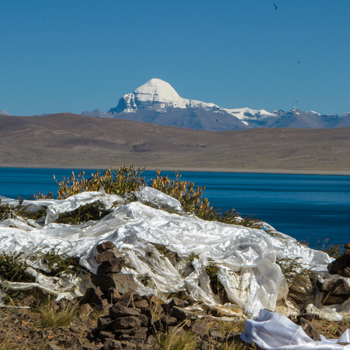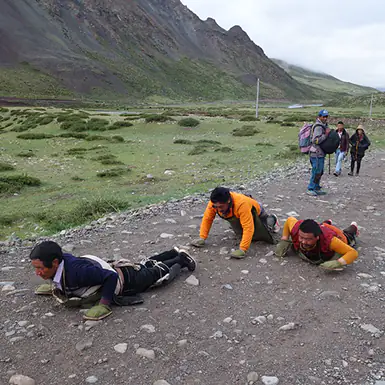Mount Kailash and Lake Mansarovar are located in the remote western region of the Tibet Autonomous Region in China, near the borders of Nepal and India. Mount Kailash, standing at 6,638 meters, is a striking peak in the Trans Himalayas. Notable for its distinct pyramid shape and four symmetrical sides, it resembles a crystal rising into the sky. Nearby, Lake Mansarovar sits at an altitude of 4,590 meters, making it one of the highest freshwater lakes in the world. Mansarovar Lake is famous for its clear blue waters that reflect the surrounding mountains. For those planning the Kailash Mansarovar Yatra from Singapore, the tour to this sacred region offers breathtaking natural beauty and profound spiritual experiences.
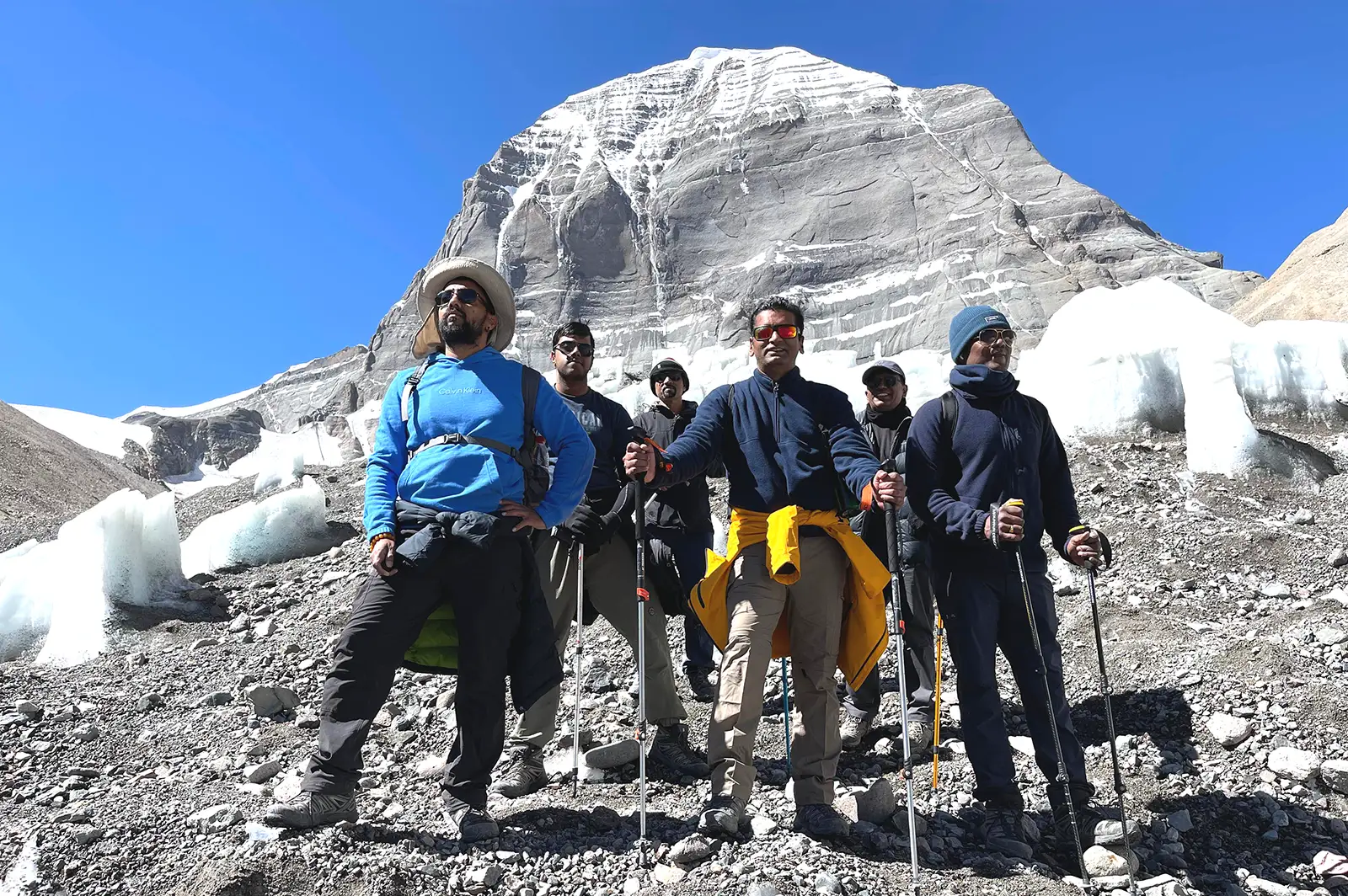
Spiritual Significance across Religions
Mount Kailash holds spiritual importance in several religions. In Hinduism, people believe that Mount Kailash is the home of Lord Shiva and his wife, Parvati. It represents the highest spiritual goal and is seen as the source of divine power. Buddhists revere it as the home of Demchok (Chakrasamvara), representing supreme bliss. For Jains, it is the site where their first Tirthankara, Rishabhadeva, attained nirvana. Followers of the ancient Bon religion regard it as the axis mundi, the spiritual center of the universe. This convergence of beliefs makes the Kailash Mansarovar Yatra from Singapore a unique pilgrimage that transcends religious boundaries and offers a rich tapestry of cultural and spiritual insights.
Why Pilgrims from Singapore Undertake the Trip
Pilgrims worldwide, including those from Singapore, are drawn to the Kailash Mansarovar Yatra for its deep spiritual significance and the transformative challenge of the journey. The trek around Mount Kailash, known as the Kora, spans approximately 52 kilometers and is believed to cleanse sins and bring enlightenment. Completing the Kora is considered a significant spiritual achievement.
Singaporeans start on the Kailash Mansarovar Yatra from Singapore to seek spiritual growth, personal fulfillment, and a connection with ancient traditions that are difficult to find elsewhere. The tour also offers an opportunity to experience the pristine landscapes of the Himalayas, observe rare wildlife, and engage with local Tibetan culture. It is a pilgrimage that combines both inner reflection and outer exploration, leaving a lasting impact on those who undertake it.
Kailash Mansarovar Yatra from Singapore Travel Routes
Planning the Kailash Mansarovar Yatra from Singapore involves choosing the best route to reach Tibet. There are two main pathways: via Nepal and China. Each option has its advantages and considerations.
Via Nepal
Flights from Singapore to Kathmandu
You can fly directly from Singapore to Kathmandu, the capital of Nepal. Airlines like Singapore Airlines offer regular flights, which take about five hours. Pre-booking frequently provides more affordable options.
Overland Journey or Connecting Flights from Kathmandu to Tibet
From Kathmandu, you have two options to reach Tibet:
Overland Tour: Travel by road through the Trishuli Highway. This scenic route passes through the Himalayas and takes about four to five days. It allows you to adjust to the high altitude gradually.
Connecting Flights: Fly from Kathmandu to Lhasa, Tibet’s capital. The flight takes about 90 minutes. This option is faster but may require more time to acclimatize upon arrival.
Via China
Direct Flights from Singapore to Major Chinese Cities
Another route is flying from Singapore to major cities in China, such as Chengdu or Guangzhou. Airlines such as China Southern and Air China provide daily flights, usually taking around four to five hours.
Connecting Flights or Trains to Lhasa, Tibet
From these Chinese cities, you can:
Fly to Lhasa: Direct flights are available and take about two to three hours.
Take a Train: The Qinghai-Tibet Railway offers a train journey to Lhasa, lasting about 36 to 48 hours. This option provides gradual altitude acclimatization and stunning views.
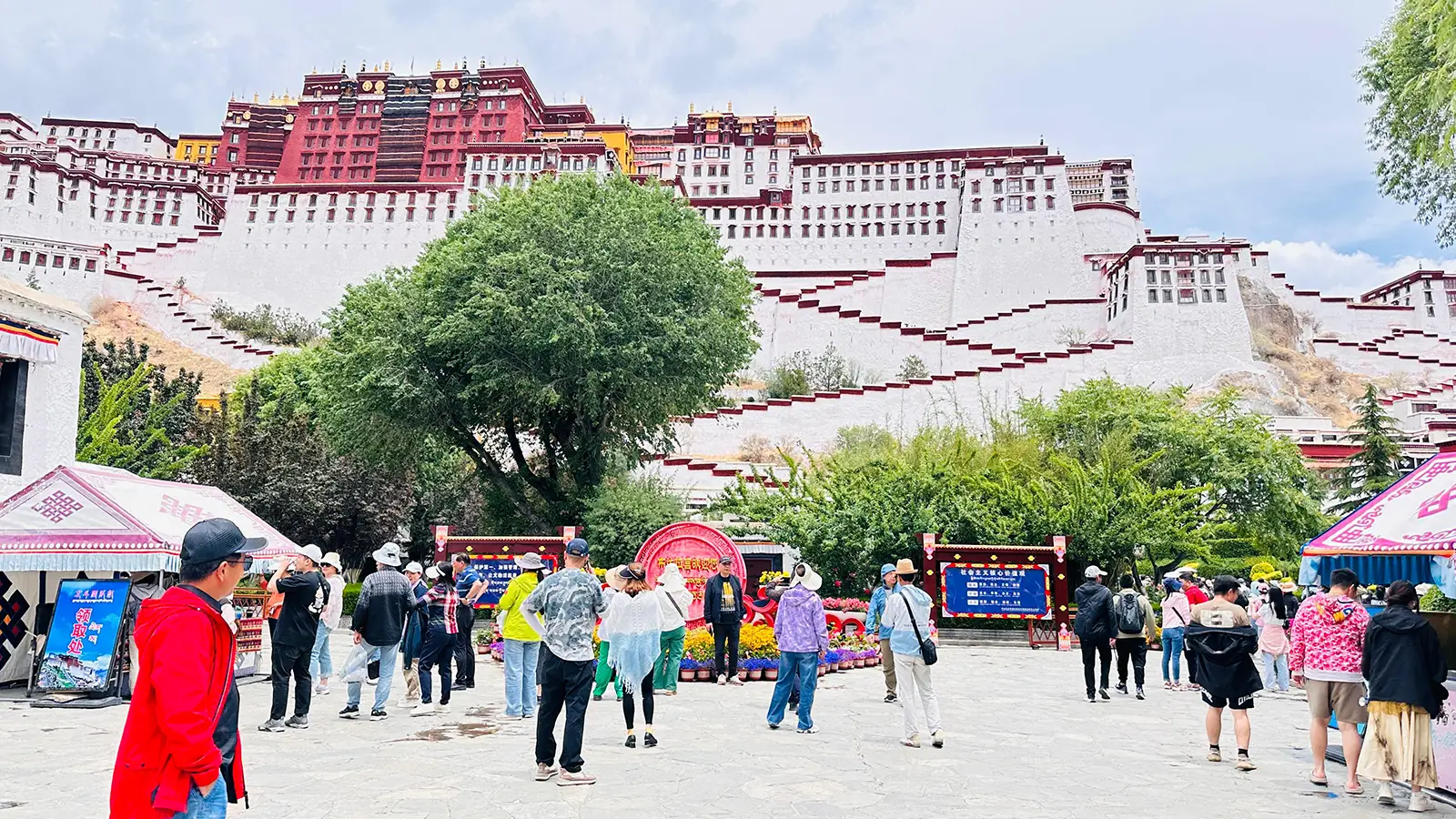
Comparison of Routes
Time
Via Nepal: It takes longer due to overland travel but offers gradual acclimatization.
Via China: Faster if you fly but may require more acclimatization time in Lhasa.
Cost
Via Nepal: Flight costs may be higher, but overland travel can be economical.
Via China: Flights to Chinese cities might be cheaper, but internal travel costs can increase.
Convenience
- Via Nepal: A Nepal visa and a Chinese Group Visa are required for Tibet.
- Via China: Needs a standard Chinese visa and Tibet Travel Permit.
When planning the Kailash Mansarovar Yatra from Singapore, consider your budget, time, and how well you adapt to high altitudes. Both routes offer unique experiences, so choose the one that best fits your needs. Careful planning ensures a smooth and fulfilling pilgrimage to this sacred destination.
Visa and Permit Requirements
Planning the Kailash Mansarovar Yatra from Singapore involves understanding the necessary visas and permits. Here’s a straightforward guide to help you navigate these requirements.
China Tourist Visa
Good news for Singaporean passport holders: You do not need a visa to enter China for stays up to 15 days. This exemption makes starting your Kailash Mansarovar Yatra from Singapore easier and free from the hassle of applying for a Chinese tourist visa. Ensure your passport won’t expire for at least six months after entering the country.
Tibet Travel Permit
Even though you can enter China without a visa, visiting Tibet requires a special permit. A Tibet Travel Permit is required for all foreigners, including Singaporean citizens, entering Tibet. You cannot apply for this permit on your own. Instead, you must arrange it through an authorized tour operator like Peregrine Treks and Tours.
We need a scanned copy of your passport and a passport-sized photo. We will handle the application process and provide you with the permit upon your arrival in China. Carrying this permit is essential, as authorities will check it at various points during your trip.
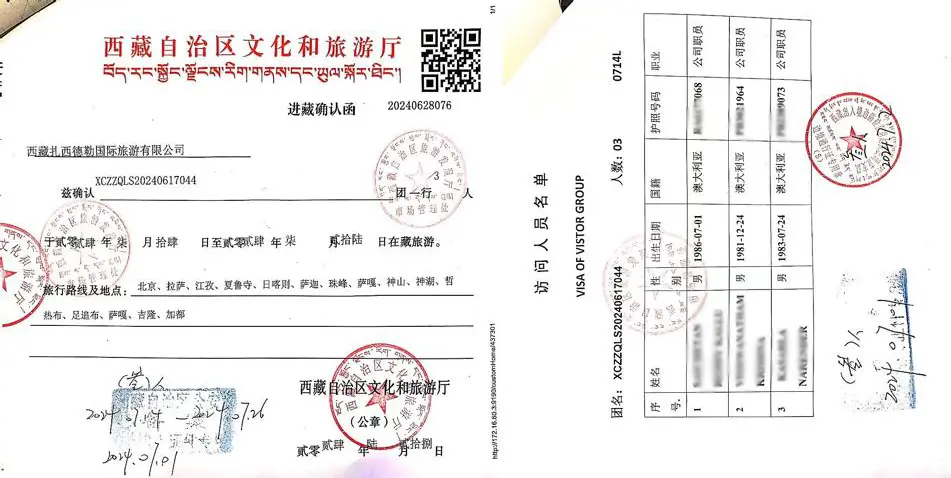
Additional Permits
Besides the Tibet Travel Permit, there are other permits required for specific regions:
Aliens’ Travel Permit: This permit is necessary for travel outside Lhasa, such as to Shigatse and Mount Everest base camp. Your tour operator will arrange it for you in Lhasa.
Military Permit: This permit is required for sensitive border areas like Mount Kailash. Peregrine Treks or your chosen tour operator will also handle this permit. Ensure you provide all necessary information promptly to avoid delays.
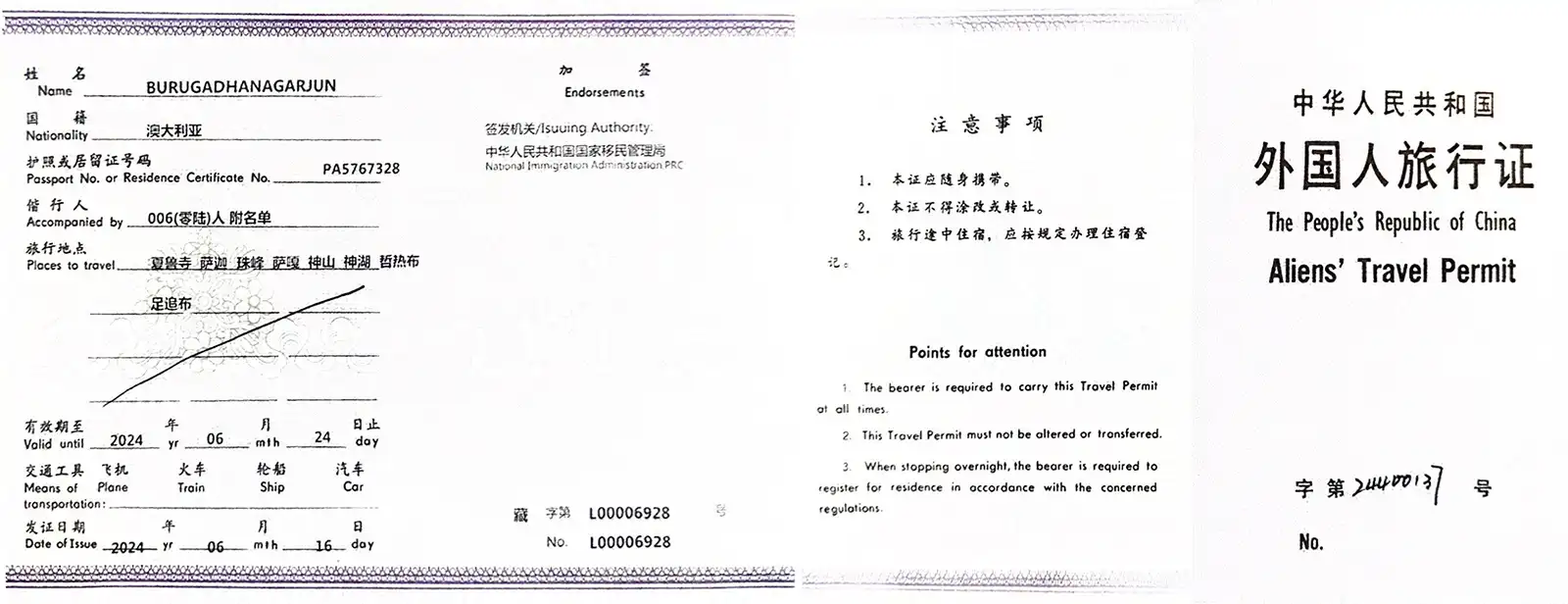
Nepal Visa (If Traveling via Nepal)
You will need a Nepalese visa if your route for the Kailash Mansarovar Yatra from Singapore goes through Nepal. Obtaining a Nepal visa is straightforward:
Visa on Arrival: You can get a Nepal Visa at Tribhuvan International Airport in Kathmandu. Bring a passport-sized photo and fill out the arrival form. The visa fee is payable in major currencies.
15-day visa: USD 30
30-day visa: USD 50
Multiple Entry: All tourist visas are multiple-entry, allowing you to enter and exit Nepal within the visa period.
Ensure your passport is valid for at least six months. Having some spare passport photos can be helpful for permits and other documents.
Key Tips
Work with a Reliable Tour Operator: They will manage all permit applications and guide you through the process.
Prepare Documents Early: Submit all required documents to your tour operator.
Carry Copies: Keep photocopies of your passport and permits. They can be helpful if you lose the originals.
Understanding these visa and permit requirements ensures a smooth start to your Kailash Mansarovar Yatra from Singapore. Thorough physical and mental preparation allows you to fully prepare for this sacred tour’s spiritual and cultural wonders.
Itinerary Planning
Planning the Kailash Mansarovar Yatra from Singapore requires careful attention to your daily activities. Below is a detailed itinerary with each day described in paragraphs. This will help you understand what to expect and prepare accordingly.
Sample Itinerary from Tibet
Day 1: Arrive in Lhasa
You fly from Singapore to Lhasa, usually with a stopover in a major Chinese city. Upon arrival in Lhasa, you check into your hotel and rest for the rest of the day. Adjusting to a high altitude is essential for relaxing and hydrating.
Day 2: Lhasa Sightseeing
You visit the Potala Palace, the historic residence of the Dalai Lama, exploring its many rooms and chapels. In the afternoon, you explore Jokhang Temple, the spiritual heart of Tibetan Buddhism. Walking around Barkhor Street, you experience local culture and shop for souvenirs.

Day 3: Lhasa Sightseeing
You tour Drepung Monastery, once the largest monastery in the world, learning about monastic life. Later, you visit Sera Monastery, famous for the debating monks who practice their philosophy in lively sessions. In the evening, you are free to rest and prepare for the next day’s travel.
Day 4: Drive to Shigatse
You leave Lhasa and drive to Shigatse, the second-largest city in Tibet, enjoying scenic views. The route takes you over high mountain passes with panoramic views of the Himalayas. Upon arrival, you visit Tashilhunpo Monastery, the seat of the Panchen Lama.
Day 5: Drive to Saga
Continuing your Kailash Mansarovar Yatra from Singapore, you drive from Shigatse to Saga. The journey offers breathtaking views of the Tibetan plateau, rivers, and nomadic settlements. In Saga, you settle into your accommodation and rest for the night.
Day 6: Drive to Mansarovar
Today, you travel to Lake Mansarovar, one of the highest freshwater lakes in the world. The lake’s clear blue waters are considered sacred, and you may take a ritual bath. You spend the night near the lake, surrounded by a peaceful environment.
Day 7: Drive to Darchen
You proceed to Darchen, the base town, for treks around Mount Kailash. You check your gear and supplies to prepare for the upcoming Kailash Kora. The rest of the day is spent resting and acclimatizing to the altitude.
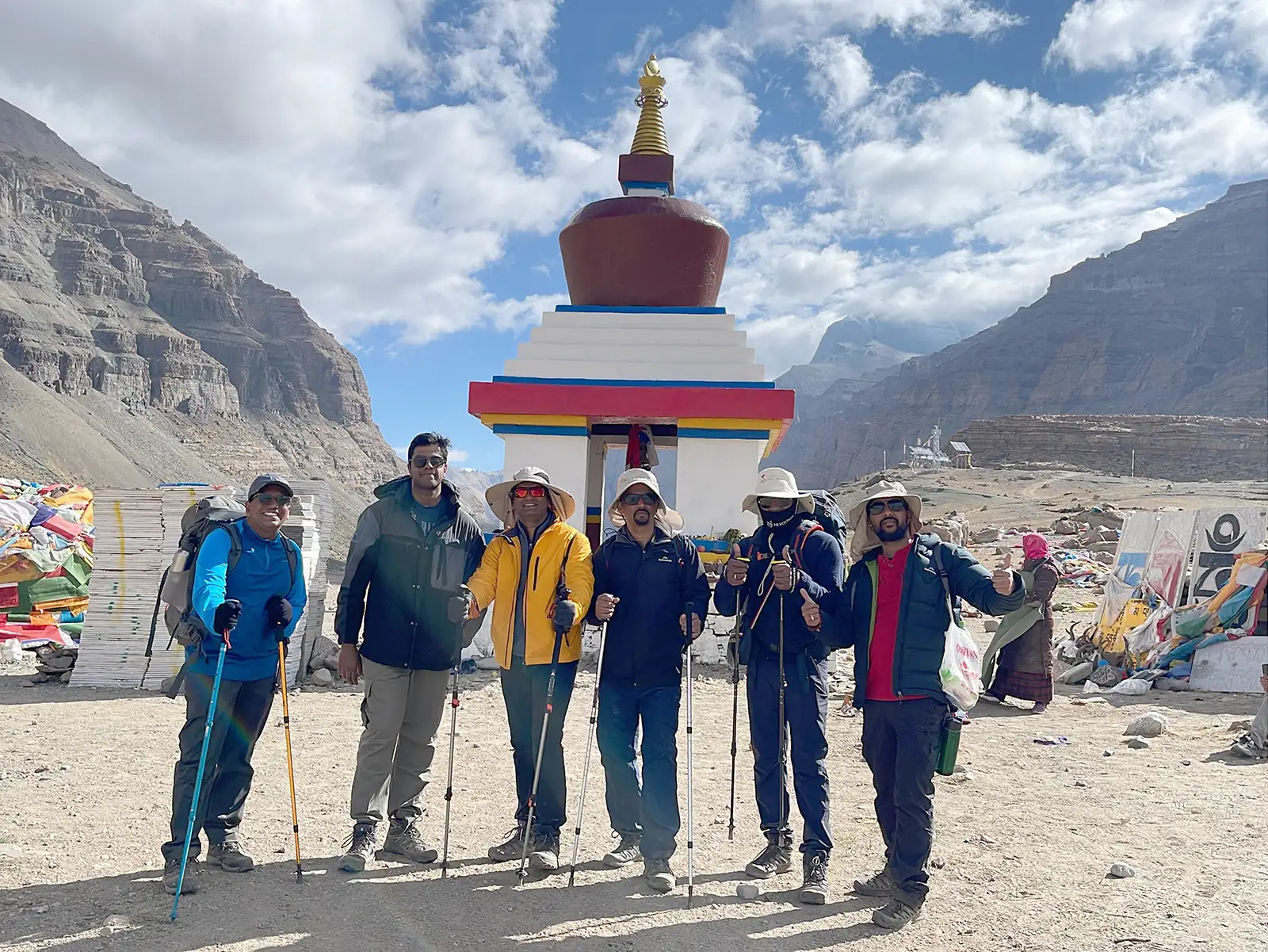
Day 8: Trek to Dirapuk
Starting from Yamdwar, you begin your trek towards Dirapuk Monastery. The trail offers close-up views of Mount Kailash’s north face, a sight pilgrims cherish. After several hours of walking, you reach Dirapuk and rest for the night in a guesthouse.
Day 9: Trek to Zutulpuk
This is the most challenging day as you cross Dolma La Pass at 5,636 meters. The ascent is steep, but the spiritual significance and stunning views motivate you. Descending from the pass, you arrive at Zutulpuk Monastery, where you stay overnight.
Day 10: Complete the Trek and Drive to Saga
You finish the Kora by trekking back to Darchen, feeling accomplished. After lunch, you drive back to Saga, retracing your route. The evening is spent resting after the strenuous trek.
Day 11: Drive to Kerung
Departing from Saga, you head towards Kerung near the Nepal border. You’ll drive through beautiful countryside and pass by small Tibetan villages. Upon arrival, you check into your hotel and relax.
Day 12: Drive to Kathmandu
You cross the border into Nepal and continue your trip to Kathmandu. The road winds through the Himalayan foothills, offering beautiful views. In Kathmandu, you settle into your hotel and unwind.
Day 13: Kathmandu Sightseeing
You explore Kathmandu’s cultural sites, such as Pashupatinath Temple and Boudhanath Stupa. Visiting local markets allows you to experience the vibrant Nepalese culture and perhaps buy souvenirs. This day will enable you to reflect on your Kailash Mansarovar Yatra from Singapore.
Day 14: Departure from Kathmandu
You prepare to return to Singapore after a memorable trip. Airport transfers are arranged for your departure flight. You leave with lasting memories and a sense of spiritual fulfillment.
Sample Itinerary from Kathmandu
Day 1: Kathmandu Arrival
You arrive in Kathmandu from Singapore and are welcomed by your tour representative. After checking into your hotel, you have time to rest and adjust. In the evening, you might attend a briefing about the upcoming yatra.
Day 2: Drive to Rasuwagadhi (Nepal-Tibet Border)
You leave Kathmandu early and drive towards the border town of Rasuwagadhi. You’ll drive through hills covered in green and past rivers. Upon arrival, you settle into a local guesthouse for the night.
Day 3: Drive to Kerung
After completing border formalities, you enter Tibet and drive to Kerung. The scenery changes immediately, with vast landscapes replacing the greenery. You spend the night acclimatizing to the higher altitude.
Day 4: Drive to Saga
Continuing your Kailash Mansarovar Yatra from Singapore, you drive from Kerung to Saga. The road offers stunning views of the Tibetan plateau and snow-capped mountains. In Saga, you rest and prepare for the next day’s travel.
Day 5: Drive to Mansarovar
Today, you reach the sacred Lake Mansarovar, a key highlight of your trip. The peaceful place is perfect for thinking and bathing ritually. You spend the night near the lake, soaking in its tranquility.
Day 6: Drive to Darchen
You proceed to Darchen, the starting point for Mount Kailash Kora. You make final preparations for the trek, ensuring you have all the necessary supplies. The rest of the day is for rest and acclimatization.
Day 7: Trek to Dirapuk
Starting early, you begin your trek from Yamdwar to Dirapuk Monastery. The path is moderately challenging but offers rewarding views of Mount Kailash. After several hours of trekking, you reach Dirapuk and rest for the night.
Day 8: Trek to Zutulpuk
You face the most challenging part of the trek as you cross Dolma La Pass. The climb is challenging, but the panoramic views from the top are stunning. Descending carefully, you arrive at Zutulpuk Monastery for an overnight stay.
Day 9: Complete the Trek and Drive to Saga
Completing the Kora, you return to Darchen feeling fulfilled. After lunch, you begin the drive back to Saga. The evening is free for you to relax and reflect on your experience.
Day 10: Drive to Kerung
You depart from Saga and drive towards Kerung, nearing the end of your trip. The journey provides one last chance to enjoy the Tibetan landscapes. Upon arrival, you check into your accommodation and rest.
Day 11: Drive to Kathmandu
Crossing back into Nepal, you drive to Kathmandu through scenic routes. The return trip offers different perspectives on the landscapes you passed before. In Kathmandu, you may enjoy a farewell dinner with your group.
Day 12: Departure from Kathmandu
Your Kailash Mansarovar Yatra from Singapore concludes as you prepare to fly home. Airport transfers are arranged for your convenience. You depart with cherished memories and a sense of accomplishment.

Key Highlights
Circumambulation (Kora) of Mount Kailash
A central part of the Kailash Mansarovar Yatra from Singapore is the Kora around Mount Kailash. This 52-kilometer trek is considered sacred and is believed to bring spiritual benefits. Completing the Kora is a significant achievement that many pilgrims deeply value.
Ritual Bathing in Lake Mansarovar
Lake Mansarovar is a high lake with fresh water. It’s essential in religion, and people believe bathing in its clear water washes away sins and makes your soul pure. Spending time by the lake allows for peaceful reflection and connection with nature.
Duration of the Trip
The typical length of the Kailash Mansarovar Yatra from Singapore ranges from 12 to 16 days. This duration allows for proper acclimatization, sightseeing, and completing the Kora without rushing. Planning your schedule accordingly ensures a smooth and fulfilling pilgrimage.
When planning your Kailash Mansarovar Yatra from Singapore, consider physical fitness, altitude acclimatization, and travel arrangements. Working with experienced tour operators can help ensure a smooth and fulfilling pilgrimage. Remember to pack appropriately, stay hydrated, and respect local customs to make the most of this profound spiritual journey.
Cost Estimates
Planning the Kailash Mansarovar Yatra from Singapore involves understanding the costs. Here’s a breakdown to help you budget effectively.
Breakdown of Expenses
- Flights: Depending on the season and how early you book, round-trip flights from Singapore to Kathmandu or Lhasa range from SGD 800 to SGD 1,500.
- Visas and Permits: Singaporean passport holders do not need a visa to stay in China for up to 15 days. However, Tibet and Mount Kailash permits are required and usually cost around SGD 300, arranged through a tour operator.
- Tour Packages: A standard tour package, including accommodation, meals, transportation, and guides, typically costs SGD 4,000 and SGD 5,000 per person.
- Personal Expenses: Allocate extra funds for tips, snacks, souvenirs, and emergencies. This might add up to SGD 500 to SGD 800.
Budgeting Tips
- Book Early: Airlines and tour operators often offer early booking discounts. Reserving your spot several months in advance can save you money.
- Travel Off-Season: Prices may be lower during off-peak times. However, ensure that weather conditions are still suitable for the yatra.
- Group Discounts: Traveling with a group can reduce costs per person. Some tour operators offer discounts for larger groups.
- Compare Tour Operators: Research and compare what’s included in different packages. Some may offer additional services at a better price.
By planning carefully, you can manage the expenses of the Kailash Mansarovar Yatra from Singapore and enjoy a fulfilling pilgrimage without overspending.
Best Time to Visit
The best time to visit Mount Kailash is crucial when planning the Kailash Mansarovar Yatra from Singapore. The optimal season for this pilgrimage is from late May to September. During these months, the weather is more favorable, making the trek safer and more comfortable.
Optimal Season: Late May to September
Late May signals the start of warmer weather in the region. Snow begins to melt, and trekking paths become accessible. From June to September, temperatures are milder, and daylight lasts longer. This period is ideal for those undertaking the Kailash Mansarovar Yatra from Singapore, as it provides the best conditions for travel and sightseeing.
Climate Considerations
Even during the optimal season, the weather can be unpredictable. Expect a big difference in temperature between day and night. Daytime ranges from 15°C to 20°C, but nights can get very cold, dropping below freezing. July and August may bring occasional rain, leading to slippery trails. High altitudes also pose a risk of altitude sickness.
Tips for Weather Challenges
- Pack Layers: Bring clothing that can be layered to adapt to temperature changes.
- Monitor Weather Reports: Monitor the local weather forecasts during your trip.
- Allow Time to Acclimatize: Allocate additional days to acclimate to the high altitude to minimize the likelihood of illness.
By selecting the best time to visit and preparing for climate variations, your Kailash Mansarovar Yatra from Singapore can be a rewarding and memorable experience.
Physical Preparation
Fitness Requirements
Proper physical fitness is essential for the Kailash Mansarovar Yatra from Singapore. The trek covers high-altitude regions with steep ascents and rugged terrains. Good health and endurance enable you to handle long distances and challenging conditions. Undergoing a medical check-up before the trip ensures you are fit for high-altitude trekking.
Acclimatization
Adjusting to higher altitudes is essential for travelers coming from Singapore to avoid altitude sickness on the Kailash Mansarovar Yatra. Gradually ascending to higher altitudes allows your body to adapt to reduced oxygen levels. Including rest days in your itinerary helps your body adjust. Staying hydrated and eating light meals support the acclimatization process. Recognizing symptoms of altitude sickness, such as headaches and nausea, is essential so you can seek immediate help.
Training Tips
Begin physical training at least three months before departure. Incorporate cardiovascular exercises like jogging, swimming, or cycling to improve stamina. Practice hiking on hills or stairs to strengthen the leg muscles needed for trekking. Yoga and stretching exercises enhance flexibility and balance. Breathing exercises increase lung capacity, aiding in high-altitude environments. Eating a healthy diet improves your training and strengthens your immune system. Additionally, ensuring enough sleep and rest is vital for maintaining overall fitness.
Health and Safety Precautions
Altitude Sickness Awareness
High altitudes encountered during the Kailash Mansarovar Yatra from Singapore can affect health significantly. Altitude sickness may occur when ascending above 2,500 meters due to lower oxygen levels. Common symptoms include headaches, nausea, dizziness, fatigue, and shortness of breath. Drinking plenty of water will help people stay hydrated, which is essential for preventing dehydration and supporting acclimatization. Eating light meals and avoiding alcohol also reduce risks. Ascending gradually allows the body to adjust naturally. Recognizing early signs of altitude sickness enables prompt action, such as resting or descending to a lower altitude. Seeking medical attention if symptoms worsen is crucial for safety.
Medical Check-ups
Consulting a doctor from Singapore before starting the Kailash Mansarovar Yatra is essential. A medical professional can assess your fitness level and provide personalized advice. Discuss any pre-existing conditions that might be affected by high altitudes, such as heart or lung issues. Obtaining a health clearance ensures you are physically prepared for the trek. The doctor might suggest certain exercises to help build endurance. Carrying a basic first-aid kit with necessary medications is advisable. Informing your tour operator about any medical conditions helps them better assist you.
Vaccinations and Medications
Updating routine vaccinations protects against common diseases encountered during travel. Vaccinations for tetanus, diphtheria, and hepatitis A and B are recommended. Discuss vaccinations for typhoid, meningitis, and influenza with your doctor. Carrying medications for altitude sickness, such as acetazolamide, may be helpful. Bringing medicines for digestive issues, pain relief, and allergies can provide comfort during the trip. Ensuring all medications are properly labeled and stored is essential. Keeping a copy of your prescriptions can assist in case of emergencies.
Packing Essentials for Kailash Mansarovar Yatra from Singapore
Proper packing ensures a comfortable and safe experience during the Kailash Mansarovar Yatra from Singapore. Bringing the right items helps you adapt to varying weather conditions and challenging terrains.
Clothing
Layered clothing suits the varying temperatures in high-altitude regions. Start with moisture-wicking base layers to keep your skin dry. Add insulating layers like fleece jackets for warmth. Carry a waterproof and windproof outer layer to protect against rain and strong winds. Pack thermal underwear for cold nights. Bringing extra socks and undergarments maintains hygiene during the trek.
Footwear
Sturdy trekking boots provide support and grip on uneven paths. Choose boots that are waterproof and have good ankle support. Breaking in new boots before the trip prevents blisters. Packing a pair of comfortable sandals or sneakers for evenings allows your feet to rest. Bringing extra shoelaces can be helpful in case of breakage.
Accessories
Protecting yourself from the sun and cold is essential. Sunglasses with UV protection shield your eyes from solid sunlight at high altitudes. Applying sunscreen with a high SPF prevents sunburns. Wearing a wide-brimmed hat or cap protects your face and neck. Packing warm gloves and a scarf keeps your hands and neck warm during cold temperatures. Bringing a lightweight headlamp or flashlight assists in low-light conditions.
Medical Kit
Carrying a primary medical kit addresses minor health issues. Include Band-Aids, antiseptic wipes, pain relievers, and any prescription medications. Bringing medicines for common ailments like headaches, colds, and digestive problems is advisable. Packing altitude sickness medication can be helpful. Keeping a copy of your medical prescriptions ensures you can obtain replacements if needed.
Proper preparation of your packing list contributes to a successful Kailash Mansarovar Yatra from Singapore. Focusing on essential items enhances comfort and safety during the pilgrimage.
Cultural Etiquette
Understanding cultural etiquette enhances your experience during the Kailash Mansarovar Yatra from Singapore. When engaging with communities in Tibet, it is important to honor the customs and traditions of the local people.
Respecting Local Customs
Showing respect for religious practices and local customs fosters positive interactions with locals. Wear modest clothing, particularly when visiting temples and monasteries. Before entering sacred areas, remove your shoes and refrain from touching religious objects unless you have permission. Observing silence or speaking softly in holy sites demonstrates reverence.
Photography Rules
It is polite to ask for permission before taking photos of people or religious ceremonies. Some monasteries and temples prohibit photography inside. Look for signs indicating restrictions, or ask a guide if unsure. Respecting these rules prevents offending locals and preserves the sanctity of sacred sites during your Kailash Mansarovar Yatra from Singapore.
Language Tips
Learning basic phrases in Tibetan or Mandarin helps people communicate with locals. Simple greetings like “Tashi Delek” (hello in Tibetan) or “Ni Hao” (hello in Mandarin) are appreciated. Knowing phrases like “Thank you” (“Thuk-je-che” in Tibetan) enhances interactions. Carrying a phrasebook or using a translation app can assist in conversations.
Following these cultural etiquette tips enriches your Kailash Mansarovar Yatra from Singapore. Respectful behavior and open communication create meaningful connections with the local community.
Travel Tips
Currency Exchange
Understanding currency is essential when planning the Kailash Mansarovar Yatra from Singapore. The Chinese Yuan (CNY) is the official currency in Tibet, while Nepal uses the Nepalese Rupee (NPR). Exchanging Singapore Dollars (SGD) for these currencies can be done at banks, authorized exchange centers, or airports. Carrying some cash is advisable since ATMs may not be available in remote areas. Credit cards are less accepted outside major cities, so having enough local currency ensures smooth transactions during the trip.
Communication
Staying connected enhances safety and convenience during the Kailash Mansarovar Yatra from Singapore. Major cities like Lhasa and Kathmandu offer reliable mobile networks and internet services. Purchasing a local SIM card provides affordable call and data options. In remote regions, network coverage may be limited or nonexistent. Informing family and friends about possible communication gaps prepares them for delays in contact. Using messaging apps when Wi-Fi is available helps maintain communication without high costs.
Safety Measures
Prioritizing safety ensures a successful pilgrimage. Traveling with a reputable tour operator adds security and local expertise. Having copies of essential documents, such as passports and permits, stored safely can be helpful if they are lost. Following the guidance of tour leaders and respecting local regulations prevents unwanted incidents. Drinking bottled or purified water protects against illnesses. Being cautious with food hygiene by eating at clean establishments reduces health risks. Purchasing travel insurance that covers high-altitude trekking provides financial protection in emergencies.
Environmental Responsibility
Practicing environmental responsibility enhances the experience of the Kailash Mansarovar Yatra from Singapore. Preserving the natural beauty of this sacred region ensures that future pilgrims can enjoy it as well.
Leave No Trace Principles
This principle is crucial for environmental protection. Walking on designated trails helps prevent soil erosion and preserves plant life. Avoid disturbing wildlife by keeping a respectful distance—camp only in permitted areas to minimize impact on the land. Using biodegradable products reduces pollution in the ecosystem.
Waste Management
Proper waste management is crucial during the Kailash Mansarovar Yatra from Singapore. Carry reusable water bottles and refill them to reduce plastic waste. Bring reusable bags and containers for food and supplies. Pack out all non-biodegradable trash, including plastic wrappers and batteries. Dispose of biodegradable waste in designated areas or carry it out if necessary. Avoid single-use plastics whenever possible. Participate in clean-up efforts if organized by your tour group. Educating fellow travelers about responsible waste disposal promotes a collective effort to preserve the environment.
Being mindful of environmental responsibility ensures that the Kailash Mansarovar Yatra from Singapore remains a sustainable and rewarding pilgrimage. Taking simple actions to protect nature contributes to the region’s and its communities’ well-being.
Conclusion
The pilgrimage to Mount Kailash and Lake Mansarovar holds deep significance across various religions, providing a profound experience that transcends cultural boundaries. Facing the challenges of high-altitude trekking and embracing the serene beauty of the Himalayas fosters inner strength and clarity.
Visiting this sacred place lets you step away from the busy pace of modern life and reconnect with nature and your spiritual self. The memories and lessons gained during the Kailash Mansarovar Yatra from Singapore will leave a lasting impact on one’s life. The pilgrimage enriches the soul and broadens one’s understanding of different cultures and traditions.
Begin planning this transformative trip now. Research travel routes, secure necessary permits, and prepare physically and mentally for the adventure. Consulting with experienced tour operators simplifies the process and ensures a safe and meaningful experience.

